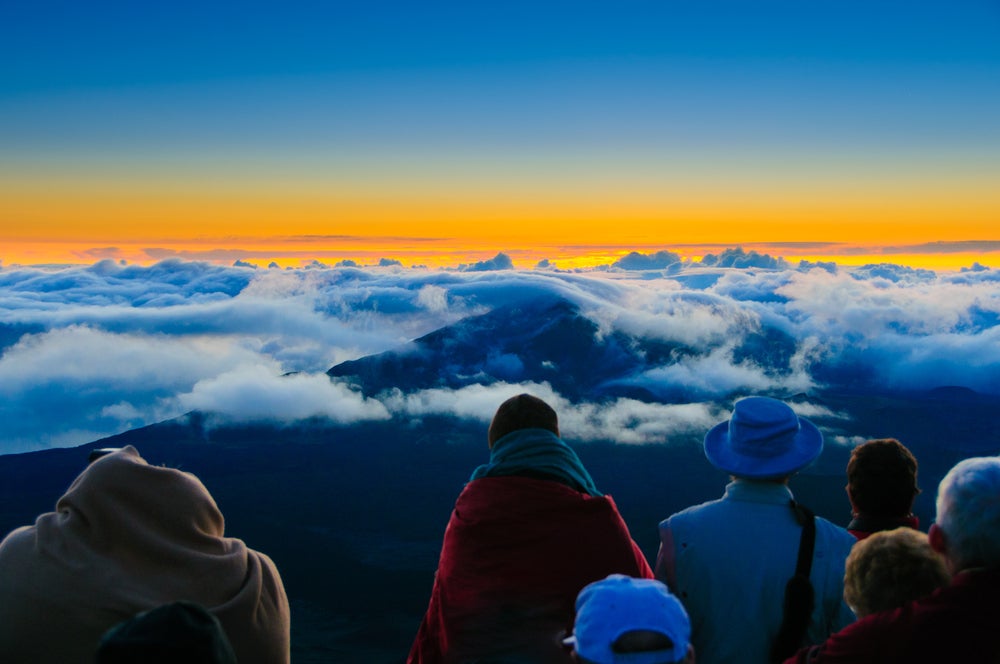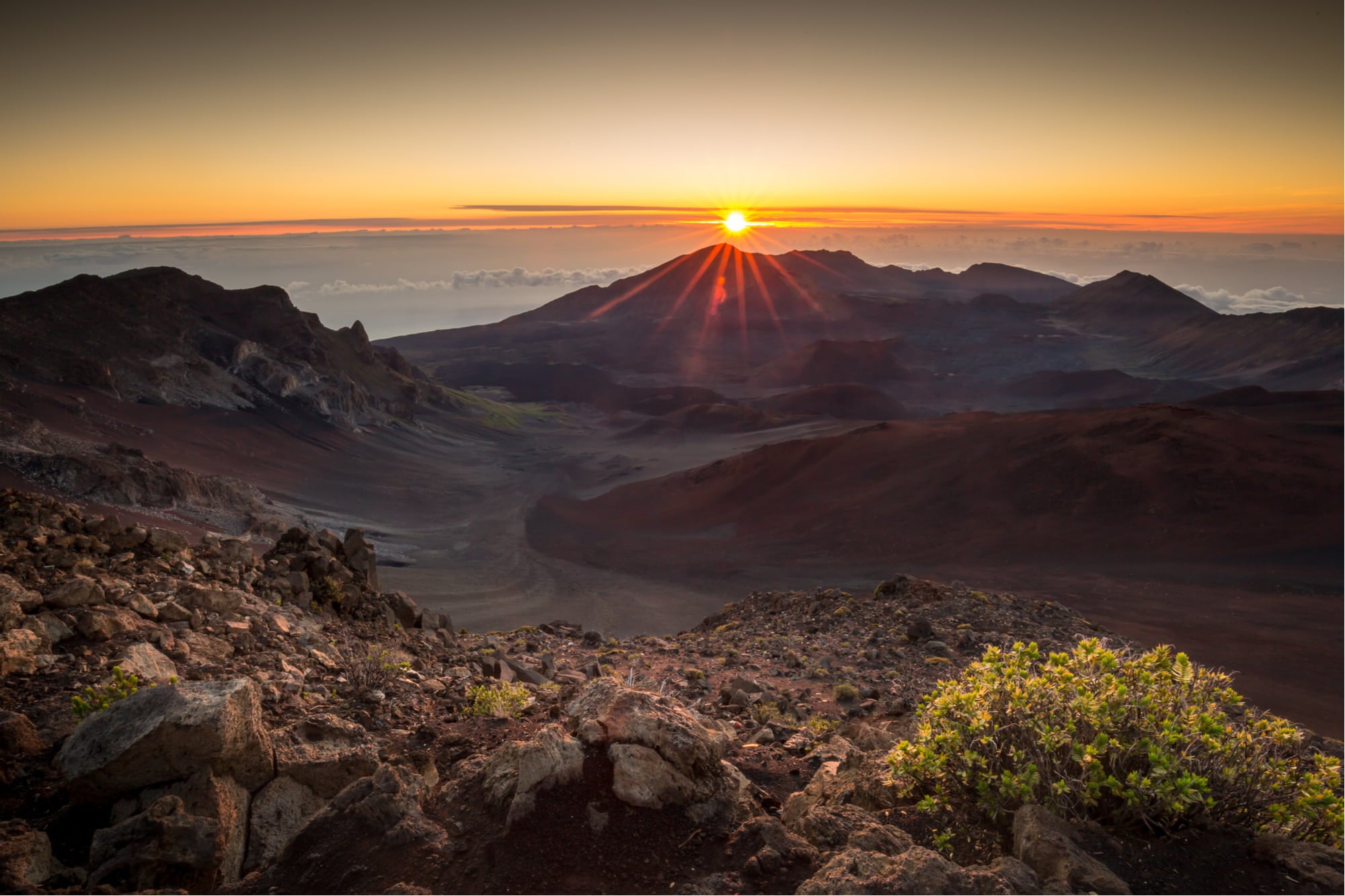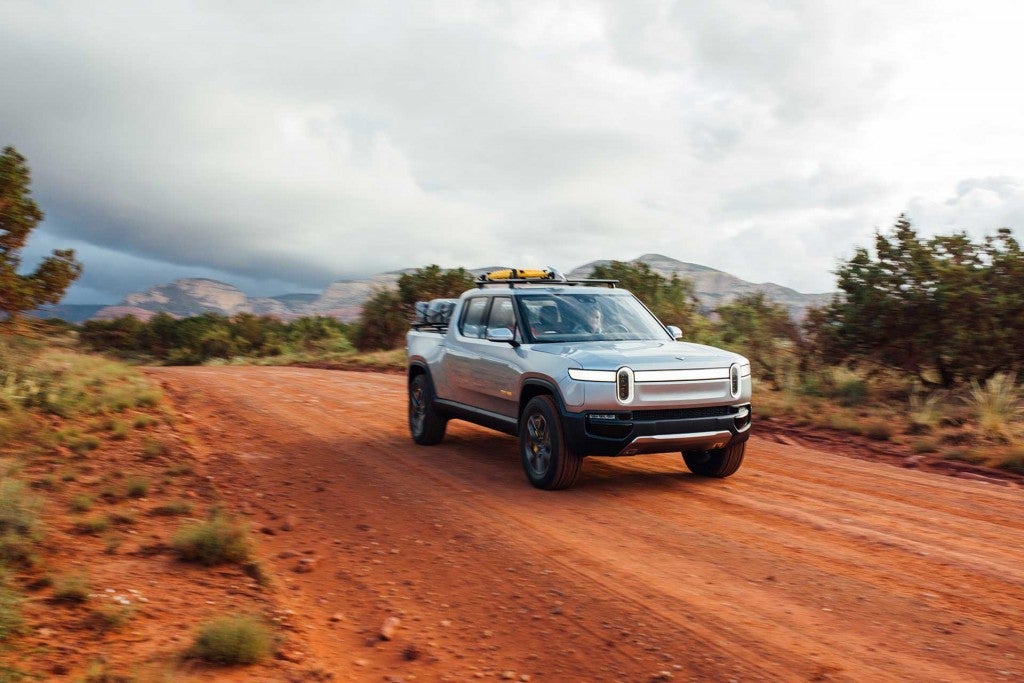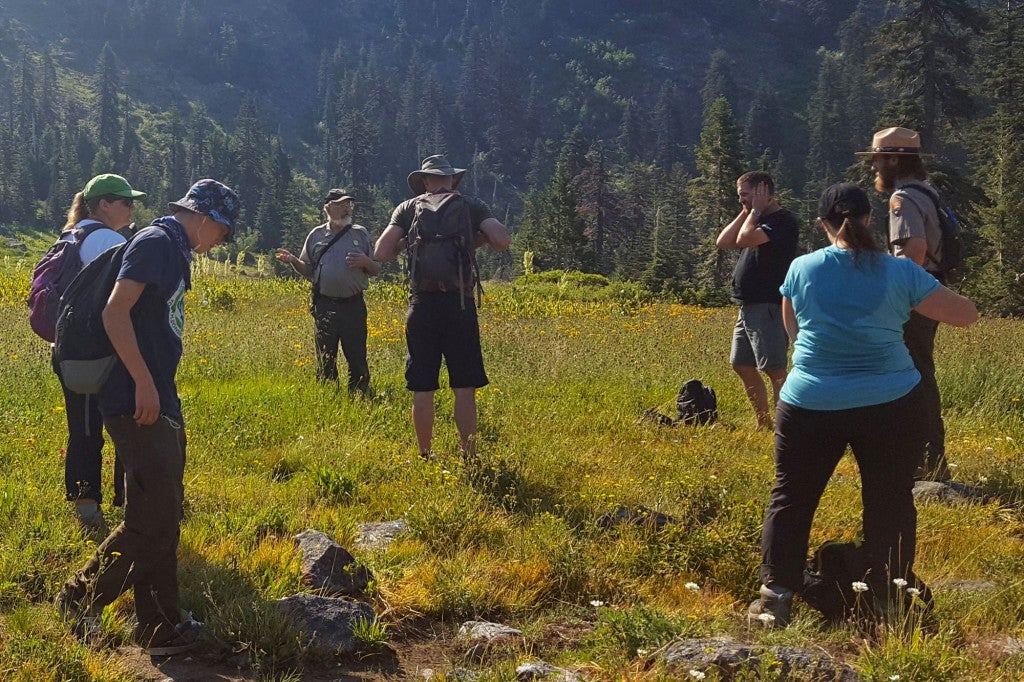There’s a Hawaiian expression, “Maui nō ka ʻoi,” meaning “Maui is the best.” After seeing Haleakalā, a dormant shield volcano that spans more than 30,000 acres of the island, you might start to understand that saying.
The mountain is a must-experience while on Maui, and a visit to the summit offers other-worldly landscapes seen nowhere else in Hawaii, ranging from Mars-like deserts dotted with cinder cones to lava rock gardens. The volcano towers up 10,023 feet and is visible from just about any point on Maui, which can make for a spectacular sunrise or sunset at Haleakalā. In fact, in Hawaiian, Haleakalā means “house of the sun.” According to Hawaiian mythology, the demigod Maui stood atop the volcano and lassoed the sun to keep it in place longer to help his family have more daylight.
In the past few years, it’s become increasingly popular to visit Haleakalā at sunrise—so much so that you now have to make a reservation with the National Park Service in advance. But visiting the summit at sunset is just as magical, less crowded and you don’t need a reservation. Here’s all you need to know.
How to See a Haleakalā Sunset

From virtually anywhere on Maui, getting to Haleakalā is a long drive. The drive from the Haleakalā National Park entrance to the summit alone takes roughly an hour. (In total, from Lahaina it’s about 3.5 hours and from Kahului, 2.5 hours.) Be sure to plan ahead: There’s no gas station in the national park; the same goes for food or drinks. Admission to Haleakalā National Park is $25 per vehicle, and only credit or debit cards are accepted.
Being at a higher altitude than the rest of the island, Haleakalā’s summit has its own, often unpredictable weather system. It can go from warm and sunny to cold, cloudy and rainy in a matter of minutes—and then change again. But since the elevation is slightly more than 10,000 feet, the weather is colder than the rest of Maui (in the winter, it can even snow.) Be sure to dress warmly; once the sun goes down, temperatures can drop into the 40s or below. It’s common to see fellow sunset watchers with winter coats, beanies and gloves.
If you want to hike or peruse the visitors center before the sunset, arrive with plenty of time to park at the main summit parking lot and explore beforehand. Average sunet times, depending on the season, can be found online.
What You’ll See
On an island already known for stunning sunsets, watching the sun dip below the vast horizon of white, fluffy clouds during a Haleakalā sunset is unforgettable. The sky is bathed in a turmeric-hued glow and dramatically shifts from orange to crimson to nearly magenta. And long after the sun has disappeared, the sea of clouds stays aglow.
You won’t be the only one watching this technicolor transformation, so make sure you find a viewing spot for you and your camera before the sun starts setting. One of the best spots to watch a Haleakalā sunset is atop a small hill near the Haleakalā Observatory, an astronomical research observatory. Parking is limited here, but you can walk up from the summit parking lot. Great views of the sunset can also be had up a short incline from the start of the Pā Ka‘oao hiking trail. If you don’t feel like venturing far from the car, you can simply walk to the summit observation areas and still take in a beautiful evening sky.
Other Things to Do
Some people visit the park merely to watch a Haleakalā sunset or sunrise. But after making the journey to the summit, take the time to explore the area. Keep your eyes and ears open, as Haleakalā National Park has the highest number of endangered species of all the National Parks, including the elusive nēnē, a Hawaiian goose and the state bird, and the endemic hinahina or silversword plant.
To fully experience the 33-mile-long, 24-mile-wide volcano, take a hike. After all, the park stretches from mauka to makai—from the mountain to the sea — and includes forests, scrubland, desert and more.
Two relatively easy and common hikes at the summit are the Pā Ka‘oao and Keonehe‘ehe‘e, also known as the Sliding Sands trails. Both can be accessed from the main summit parking lot. At .4 miles round trip, Pā Ka‘oao is a short hike but offers stunning views of the crater after climbing the small hill to the top. Sliding Sands is part of a longer 11-mile trail, but you can simply turn back at any point. It’s a gentle sloping trail that goes into and across the crater revealing Haleakalā’s substantial and changing landscapes. The first lookout point is .5 miles in.
Remember, Haleakalā is 10,023 feet. If you’re from Colorado or an experienced hiker or climber, this doesn’t present too much of a challenge. For others, the high elevation means taking things a bit slower. Be sure to bring water with you.
Up for camping in Haleakalā National Park? The park is home to some amazing campgrounds, as is the entire island of Maui.
And one last thing: Haleakalā is still sacred to Hawaiians—and has a fragile ecology—so be respectful during your visit.
The Dyrt is the only camping app with all of the public and private campgrounds, RV parks, and free camping locations in the United States. Download now for iOS and Android.Popular Articles:
Articles on The Dyrt Magazine may contain links to affiliate websites. The Dyrt receives an affiliate commission for any purchases made by using such links at no additional cost to you the consumer.



